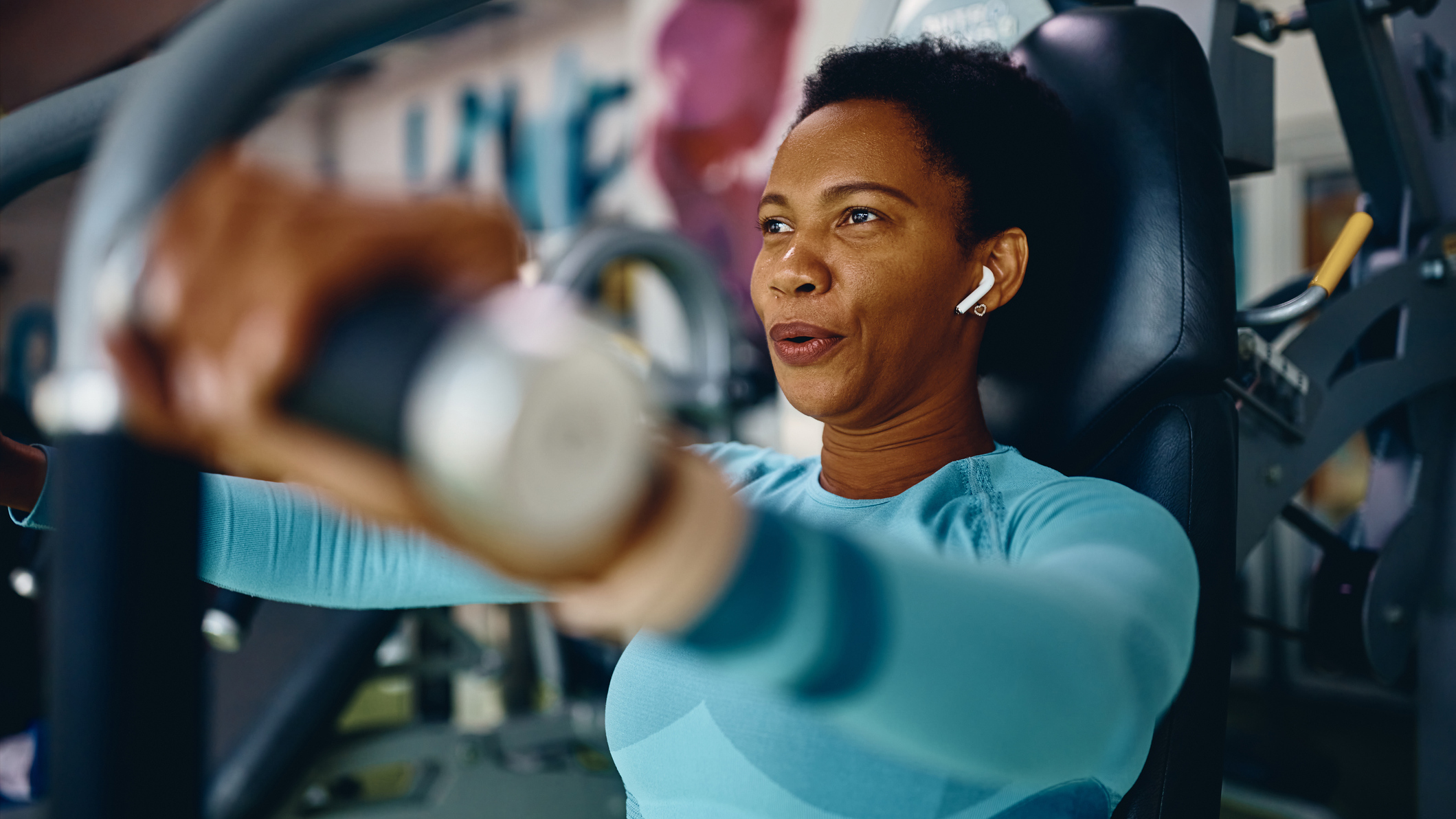A straightforward gym machine workout plan for beginners
If you’ve never set foot in a gym before, this progressive gym machine workout plan will help you build confidence and muscle over 12 weeks


Weights machines are a great place to start when you’re new to the gym, especially if you’ve joined to slim down because a more muscular body burns more calories at rest.
But even if you’re not exercising for weight loss, strength training twice a week should be an essential component of your routine. Gym machine workouts can feel more accessible to beginners compared with free weights such as dumbbells because there are written instructions.
While there are some benefits to free-weights workouts that you don’t get while working on machines, you will still increase your fitness and strength, and learn the principles and movement patterns of key lifts.
“Weights machines are really easy to execute,” says Dan Petersen, health and fitness manager at Fitness First gym on Tottenham Court Road in London.
“They typically follow quite basic lines of movement. For example, a chest press is a straight push away from the body, and because it doesn’t require so much focus on stability compared with free weights, people find it a little easier.
“They’re what we call compound movements—two or more joints in action. Taking the chest press again, the elbow and shoulder joints move, which gets to work your front shoulder, pectorals and triceps. So with weight machines you’re able to hit large volumes of muscle at once.
“From a safety point of view, it’s easy to adjust the weight as well and most weight machines tend to have instructions.”
Start your week with achievable workout ideas, health tips and wellbeing advice in your inbox.
Petersen is quick to point out that weights machines shouldn’t be the be-all and end-all of a gym-goer’s experience. “I like teaching new people about bodyweight exercises first, teaching them how to plank and do squats properly.
“Weights machines are in a fixed seated position and sitting people on a gym machine, especially people who sit down all day, isn’t very proactive.”
In line with that advice, try sprinkling in some bodyweight exercises alongside this simple, progressive gym machine workout plan.
Gym machine workout plan for beginners
Sets and reps explained
The gym machine workout plan below uses sets and reps to order the session. The reps (short for repetitions) are the number of times you should perform an exercise before taking a break. Those reps are grouped together and called a set.
The structure for all the exercises in this workout is three sets and 10-15 reps, resting for 60-90 seconds between sets. Here’s what that translates to for each exercise.
- Complete 10-15 reps (the first set)
- Rest for 60-90 seconds
- Complete 10-15 reps (the second set)
- Rest for 60-90 seconds
- Complete 10-15 reps (the third set)
- Rest for 60-90 seconds
A range for repetitions and rest periods allows you to find an appropriate level to begin with, but as you tick off sessions you’ll be surprised at how easily your body adapts—as long as you’re eating a healthy diet and getting enough rest. As it gets easier, it’s important to make it harder by adding another rep each session and/or reducing your rest periods so your fitness continues to improve.
How to select the right weight
“It’s a tough one for people coming in, so the first bit of advice is to do it with the support of a personal trainer who can give rough guidelines on where to start,” says Petersen.
“But if you’re on your own, start with a certain rep range and then use the RPE (rate of perceived exertion) scale. Target reps for general fitness or weight loss would be around 10 to 15 per set. If you can complete 15 reps and your RPE is less than eight out of 10, increase the weight. If the RPE is 10 out of 10 and you can’t even get to 10 reps, you’re going too heavy and need to reduce the weight accordingly.”
How many times a week should you do this gym machine workout?
“This workout is a quick and easy introduction to weight training,” says Petersen. “Most people would be able to do it three times a week if they had a rest day in between. Training on a Monday, Wednesday and Friday suits most people.”
How many weeks should you continue this workout?
The short answer is until you reach your limits and stop improving.
“Typically, most training programmes are eight to 12 weeks,” says Petersen. “You will adapt to the movements very quickly and over time you’ll be able to gradually increase the weight and the repetitions will go up as well.
“It will get to a point where the weight or the repetitions aren’t going up for a couple of sessions, which would indicate that you’re hitting a bit of a plateau.” Unless you have a great memory, it’s worth keeping a training diary of reps, weight used and a RPE score you can refer back to.
The beginner gym machine workout
Life Fitness is one of the beginner manufacturers of commercial weights machines, so I’ve included its video demonstrations of the relevant machine.
However, there can be subtle differences between weights machines in different gyms, so make sure you check the instructions and adjust the seat position every time.
Warm up
Spend 10 minutes getting your body ready to work with light cardio and dynamic stretches.
1. Chest press
Sets: 3 Reps: 10-15 Rest: 60-90sec
Targets: Chest, pectorals and triceps
2. Lat pull-down
Sets: 3 Reps: 10-15 Rest: 60-90sec
Targets: Lats, back and biceps
3. Leg press
Sets: 3 Reps: 10-15 Rest: 60-90sec
Targets: Glutes, quads and hamstrings
4. Shoulder press
Sets: 3 Reps: 10-15 Rest: 60-90sec
Targets: Deltoids and triceps

Jonathan has worked as an editor of health and fitness websites since 2016. He discovered running, yoga and the gym workouts through work, and is passionate about helping readers enjoy the benefits of an active lifestyle with trustworthy advice.



